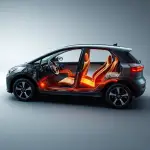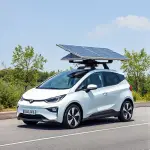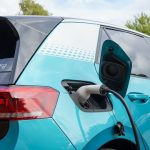Last Updated on January 28, 2025 by
Key Takeaways Video for Tesla Transmissions
Tesla Transmission Update January 2025
Tesla vehicles continue to utilize a unique single-speed fixed gear transmission, which differs from traditional multi-gear systems. This design allows for smooth acceleration and leverages the electric motor’s instant torque. The absence of a conventional gearbox simplifies driving, as drivers can select forward or reverse using a lever without needing to shift gears.
While the vehicles still incorporate open differentials for power distribution, there have been no major updates or alterations to the fundamental transmission design in Tesla models. Overall, the existing system continues to enhance the driving experience by eliminating the complexities associated with traditional transmissions.
Switching from an internal combustion engine car to an electric vehicle like a Tesla can be a big jump.
There are a lot of differences between the two types of vehicles and one of the biggest differences that jumps out to drivers instantly is the lack of a gear stick – where did it go?
If you want to learn more about Teslas and transmissions, plus how Teslas change gears without a gear stick, then keep on reading. We are going to take a look at Teslas, transmissions, and how electric cars differ from conventional ones.
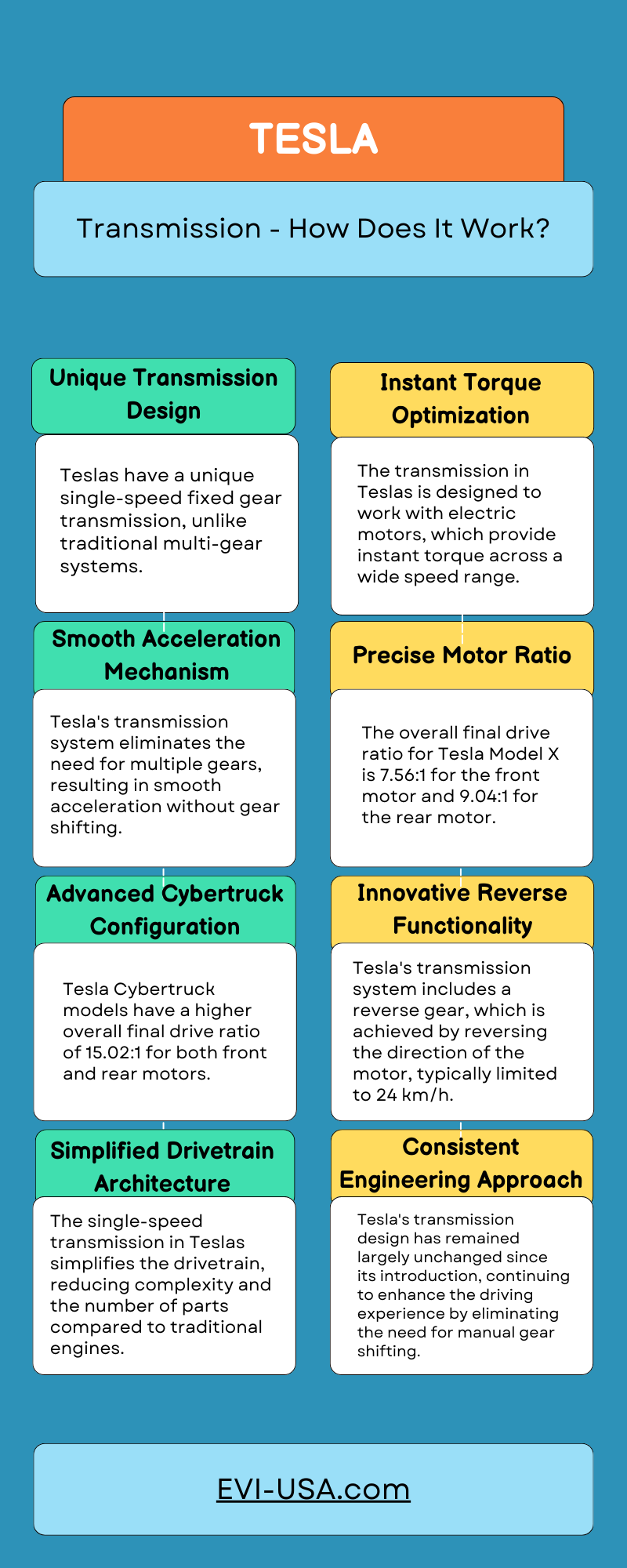
Prefer to just listen? Post summary audio
How Does Tesla Transmission Work?
The term ‘transmission’ is commonly used as another name for a car’s gearbox. Gearboxes can be found on lots of different cars as it is a vital part of its system.
It is the part that transforms the power from the engine into something the car can actually harness and use – without it, your car’s engine will just run and go nowhere.
Key Facts About Tesla Transmissions
- Single-speed fixed gear: Tesla vehicles use a single-speed transmission, unlike traditional multi-gear transmissions.
- Gearbox ratio: Tesla’s transmission has a fixed gearbox ratio of 9:1.
- Simplified design: Tesla’s electric motors have only about 17 moving parts, compared to around 200 in a conventional internal combustion engine.
- High RPM capability: Tesla motors can easily reach upwards of 20,000 rpm, much higher than traditional engines.
- Instant torque: Electric motors generate 100% of their torque at very low speeds, eliminating the need for multiple gears.
| Feature | Tesla Transmission | Traditional Transmission |
|---|---|---|
| Type | Single-speed fixed gear | Multi-speed with various gears |
| Number of gears | 1 | Typically 5-8 |
| Shifting | No shifting required | Manual or automatic shifting |
| Torque delivery | Instant at all speeds | Varies based on gear and RPM |
| Complexity | Simple, fewer moving parts | Complex, many moving parts |
| Efficiency | High efficiency across all speeds | Efficiency varies by gear |
| Maintenance | Minimal maintenance required | Regular maintenance needed |
Do Tesla Vehicles Have a Transmission?
Technically, yes – Teslas have a single speed ‘transmission’ that is nothing like transmission we are used to. This is because Teslas do not have an engine, allowing them to shed nearly 200 unnecessary parts that internal combustion engines use to drive a car.
This means that Teslas have gotten rid of transmissions so there are no gears to crank and turn. The reason why internal combustion engines need gears is because they cannot run below a certain speed otherwise the engine cuts out and your car stalls.
Teslas do not have that issue so they can run at speed they like, completely making gears and transmissions unnecessary to include.
Does Tesla Use Direct Drive?
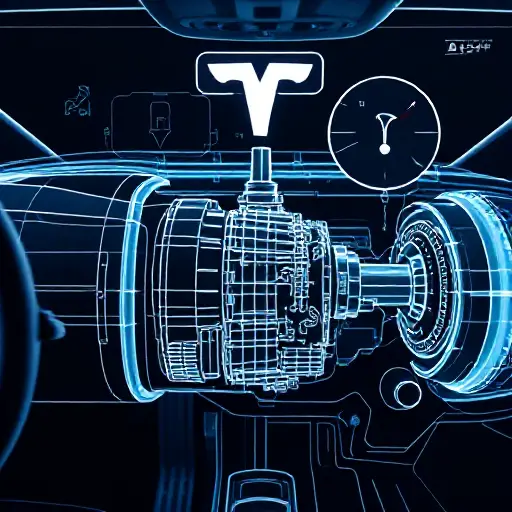
So when we say that Teslas technically have a transmission, it is because they use a direct-drive feature.
Direct-drive is a type of transmission that makes gear shifting easier as it contains fewer gears. However, Teslas use direct-drive but with no gears at all! This itself is technically a single transmission which is why Teslas do have ‘transmission’, just not what you would expect.
There are no gears or multi-speed transmissions included in a Tesla, just direct-drive that acts completely different to a regular gearbox.
If you were to say a Tesla has a transmission but doesn’t have a gearbox, a lot of people would just look at you like you’re an idiot. A lot of people assume they mean the same thing but when you get down to the finer details, they aren’t.
Do Electric Cars Have No Transmission?
This direct-drive feature is found on nearly all electric vehicles so this means that by proxy, most electric cars do not have a gearbox hence no transmission.
However, direct-drive is a type of transmission – it’s just not what everyone automatically thinks of when they hear the term. So while electric cars, including Teslas, do not feature a gearbox, they do feature a type of transmission called direct-drive that does not use multi speed transmissions or gears.
Do Teslas Need Transmission Fluid?
Because Teslas do not use gearboxes, they do not require transmission fluid.
Transmission fluid is a term used to refer to the lubricant oil used to help gears shift more easily – but a Tesla does not have any gears because it does not use a conventional internal combustion engine, but an electrically run motor instead.
The Future of EV Transmissions
The Future of EV Transmissions
The future of EV transmissions is set to bring several exciting advancements:
- Multi-speed transmissions: While many EVs currently use single-speed transmissions, there’s a growing trend towards multi-speed gearboxes to enhance efficiency and performance.
- Advanced control algorithms: Future EV transmission systems will feature sophisticated control algorithms to optimize coordination between drivetrain components, resulting in smoother acceleration and improved torque delivery.
- Energy efficiency focus: Innovations like regenerative braking systems and optimized gear ratios will continue to evolve, maximizing energy efficiency and extending driving range.
- Integration with electric drivetrains: Transmission systems will become more seamlessly integrated with other EV components, enhancing overall performance and driving experience.
- Continuously Variable Transmissions (CVTs): Some manufacturers are developing CVTs specifically for EVs, offering a wide range of gear ratios for improved efficiency and performance.
- Lightweight materials: The use of advanced, lightweight materials in transmission design will contribute to overall vehicle weight reduction and improved efficiency.
- Smart, predictive systems: Future transmissions may incorporate AI and connectivity features to adapt to driving conditions, predict driver preferences, and optimize performance based on real-time data.
- Noise reduction: Enhanced focus on developing quieter, more efficient gear drives to improve comfort and driving range.
These advancements aim to improve EV efficiency, performance, and driving experience as the automotive industry continues its shift towards electrification.
Do Teslas Have An Engine?
We said earlier that Tesla vehicles do not feature engines, which makes them very different from regular cars we are already very familiar with. Instead, they use motors – but how exactly does that work? Let’s take a closer look at Tesla’s motor.
What Kind of Motors Do Teslas Use?
Tesla uses an alternating current (AC0 induction motor in some of its vehicles like the Tesla Model S, but also uses permanent magnet direct current (DC) motors in other cars like the Tesla Model 3.
Either way, both motors work very differently for usual combustion engines that also feature transmissions like gearboxes and lots of other features. Because of this, motors run on electricity from a battery instead of running on combustion like a conventional engine.
While engines convert fuel into force, motors turn electric into mechanical energy.
How Many Motors Does a Tesla Have?
All Tesla cars have two independent motors, one in the front and one in the rear. This improves traction control in all kinds of conditions to result in a safer driving experience. Neither are controlled using regular transmissions like internal combustion vehicles do.
However, in the culture, we may see Tesla cars that feature four motor configurations instead but Tesla have yet to confirm this.
Do Electric Cars Have an Engine?
All electric cars run on motors instead of internal combustion engines. This is what makes them so different from conventional vehicles – they run on electricity instead of fuel sources like gasoline.
Do Teslas Have Differentials?
So now you are thinking about transmissions, you are probably wondering if Teslas still use differentials. They are closely related to the transmission and are part of the same system – so have Tesla removed them as well?
What Exactly Are Differentials in a Car?
The differential is a type of transmission, referring to a special set of gears that transmits engine power to the wheels. It can allow one wheel to turn at a different speed than the other, allowing for more control.
Differentials can be found alongside the transmission inside a unit called a transaxle. The transmission deals with the engine output while the differential uses that power to turn two wheels on the same axle at an appropriate speed. So, while they work very closely together, the transmission and differential have very different roles.
Do Teslas Have Differentials?
Open differentials are featured on all Tesla vehicles. Although the transmission is gone, Tesla kept the differentials so they could use the power from the motor to do the exact same thing as other cars.
Open differential is the most common type of differential found on road vehicles so it makes sense that Teslas feature them too.
The new and fancy Tesla Model 3 and Tesla Model Y also come with a limited-slip differential to improve high-speed cornering, a type of handle and control that is greatly desired by a lot of drivers.
Do Electric Cars Have Differentials?
Differentials are still commonly found on all electric vehicles. Despite how different they are from internal combustion engined vehicles, both types of car use differentials to help control steering.
This makes sense as differentials are not part of the engine but something used by the car to help channel the power elsewhere. It works just as well with an electric motor as it does with an internal combustion engine.
How Does A Tesla Work?
So a Tesla ditches conventional engines, ditches transmissions and gearboxes, but has kept differentials. Does this affect the way a Tesla drives?
How Do Teslas Reverse?
Without a transmission, a lot of people struggle to see how a Tesla can switch between driving forward or reversing. There is a level on the side of the steering wheel which will allow the driver to select either forward or reverse driving. Once selected, the car will move.
This is how a Tesla switches between forward and reverse driving without needing to use a transmission to switch gears.
How Easy is it to Drive a Tesla?
Despite losing the transmission, driving a Tesla is very similar to driving a regular car. Teslas have other additional features that do make driving them different, such as the regenerative braking feature that brakes the car the moment you let off the gas.
Most drivers switching from regular cars to a Tesla have reported that this is the hardest thing to get used to when driving a Tesla and not forgetting about the missing transmission.
So, don’t worry too much about losing that transmission – it does not affect the way you will drive nearly as much as other features will.
How Do You Start a Tesla?
The lack of a transmission makes it super easy to start up a Tesla before you drive it. Unlike with internal combustion engine cars, you don’t need to ignite an engine with a key. You just get in and select forward or reverse with a lever on the side of your steering wheel.
Just sit down, and the Tesla will start itself because it will recognize you through your fob.
Conclusion
So, while the lack of a transmission does initially confuse a lot of first time Tesla drivers, it actually makes total sense to get rid of this clunky mechanism.
Because Tesla cars are electric vehicles, they switch out conventional engines with an electric motor, meaning that the Tesla can drive at any speed without stalling. This means they don’t require a clutch or gears to function and drive properly.
To switch between reversing and driving forward, Tesla drivers just have to select which way they want to go using a level near their steering wheel and then start moving.
Removing the need to switch gears means drivers can concentrate more on other important aspects of driving like looking for hazards, so the removal of the transmission is definitely a positive aspect to all Teslas and electric vehicles.
A great way to keep up to date with Tesla cars is by checking this forum.
Interesting Reddit Threads about Tesla Transmission Development
Resources
Researchgate
Multi-Speed Gearboxes for Battery Electric Vehicles: Current Status and Future Trends Download PDF
International Research Journal of Engineering and Technology (IRJET)
Overview of transmission system for the electric vehicle Download PDF
- Lavender Oil - February 2, 2025
- Electric Cars with Solar Panels On Roof: The Future of Sustainable Driving - January 29, 2025
- Best Cheapest Electric Car Reddit Comments - January 23, 2025



